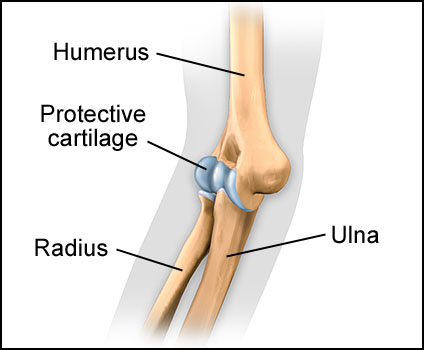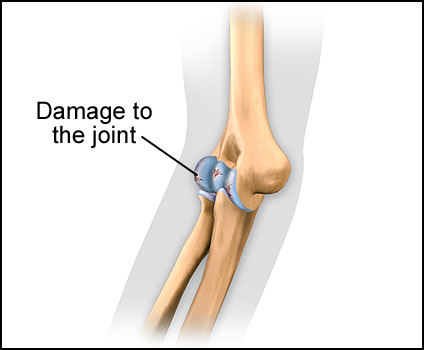
Wrist Joint Replacement
The wrist joint surfaces are formed by the radius, ulna, and carpal bones. The surfaces are covered by cartilage.
Certain conditions may indicate the need for a replacement for the wrist joint such as: osteoarthritis (shown), persistent pain, severe loss of wrist function, and certain types of fractures.
A replacement joint can help alleviate pain and improve function. The replacement joint usually has two parts that replace the joint surfaces and is made of a combination of metal and plastic.
Figure 1: Comparison of a normal wrist joint and a replacement wrist joint.
Figure 2: Normal wrist joint.
Figure 3: A damaged wrist joint.
Figure 4: Replacement wrist joint.
oml_0004a



